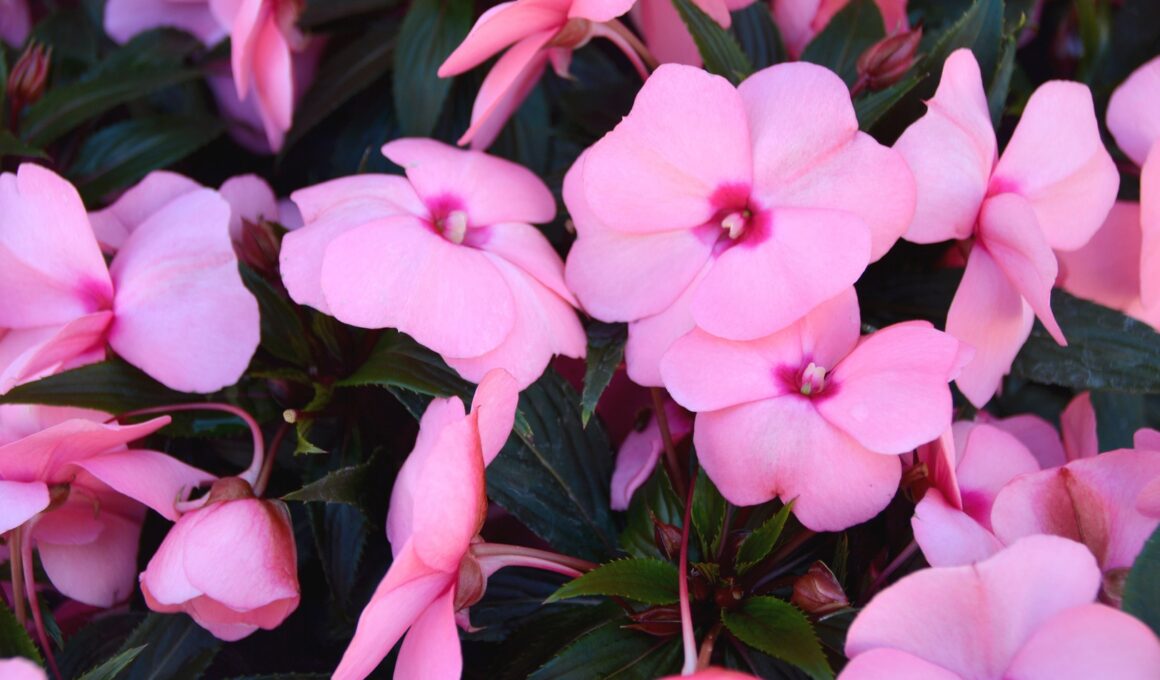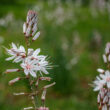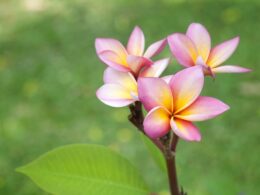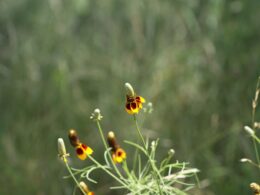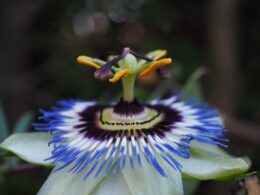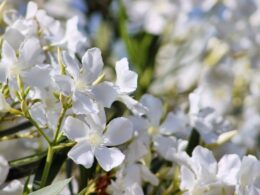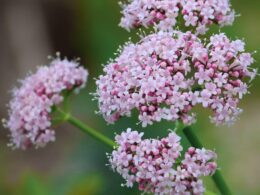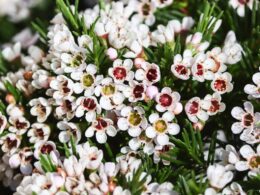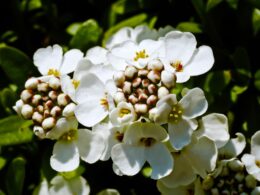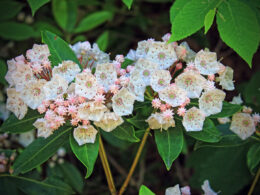The Modernized Impatiens
SunPatiens flowers are a hybrid of New Guinea Impatiens developed in Japan. These perennial hybrids were developed to be heat tolerant and disease resistant. The hybrids were first introduced in the 1990s as a flower resistant to sun.
The final result of these spectacular cuties turned out to be slightly different from planned and came to be the modern version of what they are right now. SunPatiens are available as an annual bedding plant, with both flowering varieties and foliage varieties available.
Why Are SunPatiens® so Popular?
SunPatiens® are also called touch-me-nots. They are available in a wide range of colors and flower shapes, including some that look like mini roses. The flowers are very large and colorful. They bloom in the late spring through summer, depending on when you plant them.
SunPatiens have been so popular because they are easy to grow and maintain. You can plant them directly into your garden beds or containers, as long as you give them enough sunlight (at least 6 hours). They also make excellent cut flowers for arrangements, bouquets, and centerpieces for events such as weddings or parties.
Here are some of the reasons why people want to have them in their gardens:
- They’re easy to grow. SunPatiens require very little maintenance once they’ve been planted in your garden beds or containers.
- Watering once every week or so should be enough to keep them looking great all year long!
- They come in a wide range of colors including reds, pinks, purples, blues, oranges, yellows and whites! Each type has its own unique flower shape, too.
How to Care for Your Sunpatiens Flower
SunPatiens flowers are low-growing plants that need full sun to produce vigorous blooms. They do well in containers, but they can also be planted in the ground. SunPatiens plants can be grown indoors or outdoors. They prefer full sun and grow best when planted in a location that receives at least six hours of direct sunlight each day. If you live in an area where temperatures drop below 40 degrees F, you will need to bring your plant inside for the winter months.
Watering SunPatiens Plants
The soil should be allowed to dry out between waterings, because overwatering can lead to root rot, wilting and downy mildew. The best way to tell if your plant needs watering is by looking at the soil. If it’s dry on top, then it needs water; if it’s moist or wet on top, then don’t water yet!
If you’re in doubt about how much water your plant needs, stick your finger into the soil up to your first knuckle. When moist 2 inches down, then stop watering until it dries out again at least 1 inch deep.
Temperatures
SunPatiens can tolerate a wide range of temperatures. As mentioned, they will thrive in temperatures above 50 degrees and below 85 degrees. The most important thing to remember is that they need plenty of sunlight. If you live in a warmer climate, make sure that they are not exposed to strong winds or intense sun.
If you live in an area with cooler temperatures, then you should make sure that your plants get plenty of sunlight during the day and that you place them near windows or on patios where they can get indirect sunlight.
Soil Preferences
SunPatiens are drought tolerant plants and need very little water, as long as they are getting enough sunlight each day. As long as your soil drains well and is not too wet, then it should work fine for your SunPatiens plant. Make sure that you do not over water your plants because this can cause root rot or other issues with growth or flowering.
Fertilizers
SunPatiens flowers do not require much fertilizer to thrive, but adding some during the growing season will help them produce larger flowers and larger leaves than those given just water alone. It’s also important to avoid over-fertilizing your SunPatiens because this can cause them to develop leaf burn or stunted growth due to over-saturation with nitrogen.
How to Propagate SunPatiens®
You can propagate SunPatiens flowers by taking stem cuttings, leaf cuttings or root cuttings. The best time of year to propagate these plants is in late winter or early spring. You should be able to see buds starting to form on the plant at this time.
If you take stem cuttings, remove a four-inch section of stem from the mother plant that has one leaf node and several buds on it. If you are taking leaf cuttings, carefully remove a leaf from a healthy looking branch and place it into water until roots begin to form. This can take anywhere from two weeks up to three months, depending on how fast your plant grows and what type of rooting medium you use.





